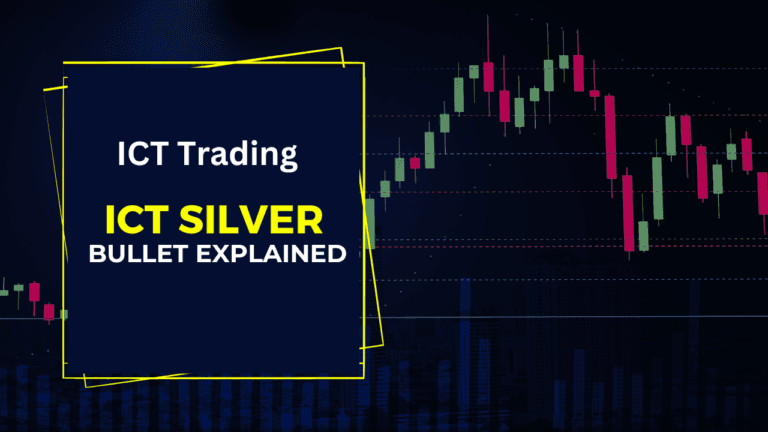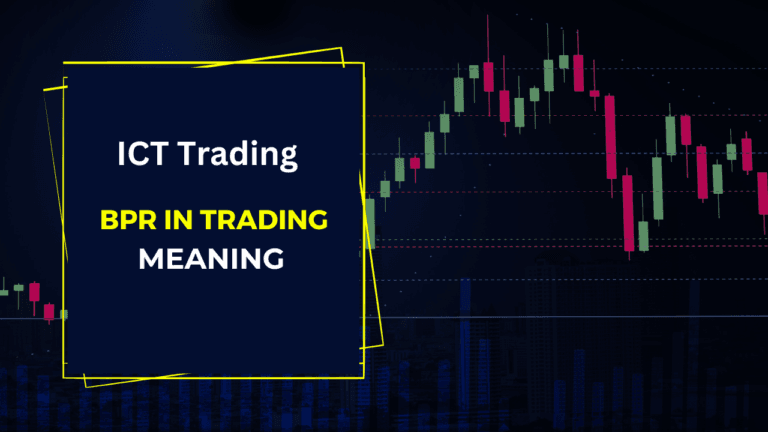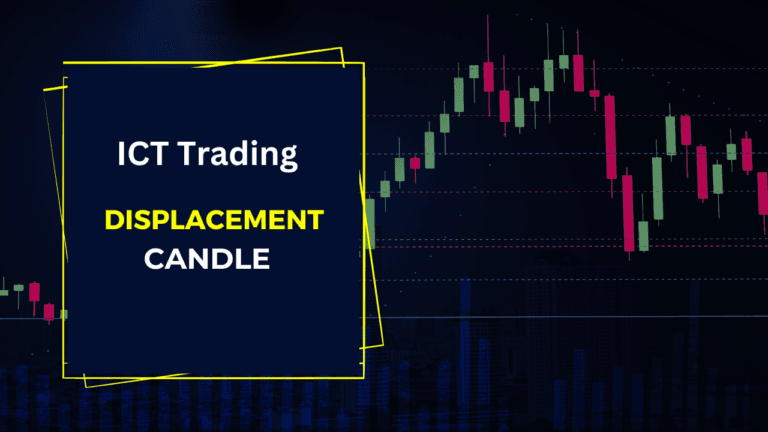IPDA ICT – Inner Circle Trading Insights

In the world of trading, strategies and methodologies play a crucial role in determining success. Among these, IPDA ICT, or Inner Circle Trading, has emerged as a prominent approach, attracting both novice and experienced traders. This article delves into the fundamentals of IPDA ICT, helping you understand its principles and applications in the trading landscape. By grasping the core concepts of Inner Circle Trading, you can enhance your trading skills and make more informed decisions.
Introduction to IPDA ICT
IPDA ICT, which stands for Inner Circle Trading, is a sophisticated trading methodology designed to empower traders by providing insights into market dynamics. Developed by Michael J. Huddleston, also known as ICT, this approach emphasizes understanding market structure, order flow, and the behavior of what is often referred to as “smart money.” By learning to recognize the patterns and movements of institutional traders, individual traders can improve their ability to predict market trends and make more strategic trading decisions.
One of the key aspects of IPDA ICT is its focus on risk management and psychological discipline. Unlike other trading strategies that might prioritize quick profits, IPDA ICT teaches traders to be patient and methodical. This approach fosters a deeper understanding of the market, enabling traders to adapt to changing conditions and make well-informed choices.
In a highly volatile market, the principles of Inner Circle Trading can be a game-changer, offering tools to navigate uncertainties and enhance trading effectiveness. The methodology incorporates various techniques that assist traders in making educated guesses about potential market movements, thereby increasing the likelihood of successful trades.
What is IPDA ICT?
IPDA ICT stands for Inner Circle Trading Analysis, a trading strategy rooted in understanding the complexities of financial markets. At its core, IPDA ICT revolves around several fundamental concepts that are crucial for traders looking to succeed in both short-term and long-term trading.
Key Principles of IPDA ICT
- Market Structure: Understanding the phases of the market is vital. IPDA ICT teaches traders to identify key stages such as accumulation (where institutions gather positions), markup (the upward price movement), distribution (where institutions sell their positions), and markdown (the downward price movement). Recognizing these phases allows traders to anticipate potential market shifts and act accordingly.
- Order Flow: The ability to read order flow is central to IPDA ICT. It involves analyzing buying and selling activity to gauge market sentiment. By understanding order flow, traders can identify areas of high interest where the price is likely to react, enhancing their chances of making profitable trades.
- Liquidity and Volatility: IPDA ICT emphasizes the importance of liquidity, as it directly affects price movement. Traders learn to spot liquidity zones where large orders can impact prices significantly. Moreover, understanding volatility helps traders manage risk and set realistic profit targets.
- Smart Money Concepts: A critical component of IPDA ICT is recognizing the behavior of institutional investors—often referred to as “smart money.” By studying their actions, traders can gain insights into potential market movements and align their strategies accordingly.
Key Concepts of IPDA ICT
To effectively implement IPDA ICT (Inner Circle Trading), traders must understand several key concepts that form the backbone of this methodology. Each of these concepts plays a crucial role in shaping a trader’s ability to analyze the market, make informed decisions, and develop successful trading strategies.
Market Structure
Market structure refers to the arrangement of price movements over time and is essential for identifying market trends. IPDA ICT teaches traders to categorize the market into specific phases:
- Accumulation: This phase occurs when large institutions begin buying assets, resulting in a sideways price movement. Identifying accumulation can help traders determine potential buying opportunities.
- Markup: After accumulation, the price typically enters a markup phase, where it rises due to increased buying interest. Recognizing this phase allows traders to capitalize on upward trends.
- Distribution: This phase marks a period where institutions begin selling their positions after a markup. Awareness of distribution helps traders identify potential reversal points and manage their exits.
- Markdown: Following distribution, prices may enter a markdown phase, characterized by a downward trend. Understanding this phase helps traders to protect their capital by avoiding losses.
Order Flow
Order flow is another vital concept in IPDA ICT, focusing on the movement of buy and sell orders within the market. By analyzing order flow, traders can gain insights into market sentiment and potential price changes. Key elements of order flow include:
- Volume: The number of trades occurring in a specific timeframe can indicate market strength. High volume often suggests strong interest, either from buyers or sellers.
- Bid and Ask: Understanding the relationship between bid and ask prices helps traders identify areas of liquidity and possible support or resistance levels.
- Imbalances: Order flow imbalances occur when there is a significant difference between buy and sell orders, indicating potential price movements. Traders can use this information to make educated decisions about entering or exiting trades.
Liquidity and Volatility
Liquidity refers to the ease with which an asset can be bought or sold without significantly affecting its price. In IPDA ICT, liquidity is critical for several reasons:
- Price Stability: High liquidity typically leads to more stable prices, making it easier for traders to execute trades at their desired prices.
- Market Participation: Understanding liquidity zones allows traders to identify where significant buying and selling activity occurs, helping them navigate potential price movements effectively.
Smart Money Concepts
Smart money refers to capital invested by institutional investors, hedge funds, and other financial professionals. These entities often have access to more information and resources than individual traders. Understanding smart money concepts allows traders to:
- Follow Institutional Trends: By analyzing the actions of smart money, traders can identify significant trends and adjust their strategies accordingly.
- Recognize Market Sentiment: The behavior of smart money can indicate overall market sentiment. For instance, increased buying by institutional investors may signal a bullish outlook, while selling may indicate bearish sentiment.
The Importance of Inner Circle Trading
Inner Circle Trading (IPDA ICT) is not just a trading strategy; it represents a comprehensive approach to understanding the financial markets. Its importance lies in several core benefits that empower traders to make informed decisions and achieve better outcomes.
Benefits of Using IPDA ICT
- Enhanced Market Understanding: One of the primary advantages of IPDA ICT is the deep market insight it offers. Traders learn to recognize patterns in price movements, enhancing their ability to predict future trends. This understanding helps traders to make more informed decisions about when to enter or exit trades.
- Improved Decision-Making: By focusing on market structure, order flow, and smart money concepts, traders can develop a more systematic approach to trading. This methodical decision-making reduces the emotional aspect of trading, leading to more consistent results.
- Better Risk Management: IPDA ICT emphasizes the importance of risk management. By understanding market dynamics and liquidity, traders can set appropriate stop-loss and take-profit levels. This proactive approach to risk management helps protect traders’ capital and minimize losses.
- Increased Profit Potential: With a solid grasp of the principles behind IPDA ICT, traders can identify profitable trading opportunities more effectively. The combination of market understanding and risk management enhances the potential for higher returns on investment.
- Adaptability to Market Changes: Financial markets are dynamic and constantly evolving. IPDA ICT equips traders with the tools to adapt to changing market conditions. By staying attuned to market structure and order flow, traders can adjust their strategies to align with current trends, ensuring they remain competitive.
Psychological Discipline
Another critical aspect of Inner Circle Trading is the emphasis on psychological discipline. Trading can be emotionally taxing, leading to impulsive decisions that can jeopardize profitability. IPDA ICT encourages traders to develop a disciplined mindset, focusing on:
- Patience: Successful trading often requires waiting for the right opportunities. IPDA ICT promotes a patient approach, discouraging traders from making hasty decisions based on emotions.
- Consistency: Establishing and following a structured trading plan is vital. IPDA ICT helps traders create a consistent approach, improving their chances of long-term success.
- Learning from Mistakes: The journey of a trader is filled with challenges. IPDA ICT emphasizes the importance of learning from both successes and failures, helping traders refine their strategies over time.
How to Use IPDA ICT in Trading
Implementing IPDA ICT (Inner Circle Trading) in your trading practice involves several strategic steps that can significantly enhance your trading outcomes. Here’s a detailed guide on how to effectively use IPDA ICT principles in your trading activities.
Setting Up Your Trading Environment
Before you begin trading with IPDA ICT, it’s essential to create a conducive trading environment. Here are the key components you’ll need:
- Trading Platform: Choose a reliable trading platform that provides access to real-time market data and analytical tools. Look for platforms that support advanced charting features and order flow analysis.
- Charting Tools: Utilize charting software that allows you to analyze market structure, identify liquidity zones, and monitor price movements effectively. Popular charting tools include TradingView and MetaTrader 4/5.
- Market Data Feeds: Access to accurate and timely market data is crucial for successful trading. Ensure your trading platform provides high-quality data feeds for the instruments you intend to trade.
Identifying Market Structure
A fundamental aspect of IPDA ICT is recognizing market structure. Here’s how to identify it:
- Analyze Price Action: Observe price movements on your charts. Look for patterns that indicate accumulation, markup, distribution, and markdown phases. This analysis helps you understand the current market sentiment.
- Support and Resistance Levels: Identify key support and resistance levels on the chart. These levels indicate where price may reverse or consolidate, providing potential entry and exit points.
- Trend Lines and Channels: Draw trend lines and channels to visualize the direction of the market. This will help you determine whether to take long (buy) or short (sell) positions based on the prevailing trend.
Reading Order Flow
Understanding order flow is essential for successful IPDA ICT trading. Here’s how to analyze order flow:
- Volume Analysis: Pay attention to volume spikes that coincide with price movements. High volume often indicates strong buying or selling interest, suggesting potential reversals or continuations.
- Depth of Market: Use the depth of market (DOM) feature on your trading platform to see live buy and sell orders. This information helps you gauge market sentiment and identify areas of liquidity.
- Identify Imbalances: Look for imbalances in order flow where buying or selling pressure is significantly higher. These imbalances can lead to swift price movements, providing trading opportunities.
Making Informed Trades
Once you’ve established your analysis, it’s time to execute trades:
- Entry Points: Based on your analysis of market structure and order flow, determine optimal entry points. Look for signals such as breakouts or reversals at key support and resistance levels.
- Stop-Loss Placement: Always use stop-loss orders to manage your risk. Place your stop-loss orders just below support levels for long trades and above resistance levels for short trades.
- Take-Profit Targets: Set realistic take-profit targets based on your risk-reward ratio. Aim for a minimum of 1:2 risk-reward, meaning for every dollar you risk, you should aim to make at least two dollars.
Risk Management
Effective risk management is a cornerstone of successful trading with IPDA ICT:
- Position Sizing: Determine the appropriate position size based on your risk tolerance and account size. Never risk more than a small percentage (1-2%) of your trading capital on a single trade.
- Diversification: Avoid putting all your capital into one trade or asset. Diversifying your portfolio can help reduce risk and improve overall returns.
- Review and Adjust: Regularly review your trades and adjust your strategies based on performance. Learning from both successful and unsuccessful trades is crucial for growth as a trader.
Resources for Learning IPDA ICT
To master IPDA ICT, continual learning and practice are essential. Here are some valuable resources to help you deepen your understanding of Inner Circle Trading:
Books
- “The Inner Circle Trader” by Michael J. Huddleston: This book is authored by the creator of IPDA ICT himself. It offers insights into his trading philosophy and practical strategies.
- “Market Wizards” by Jack D. Schwager: While not specifically about IPDA ICT, this classic book features interviews with successful traders, providing valuable insights and strategies that can complement your understanding of trading.
Forums and Communities
- Trading Forums: Engage with fellow traders on platforms like Forex Factory or Trade2Win. These forums allow you to share experiences, ask questions, and learn from others’ successes and challenges.
- Social Media Groups: Join groups on social media platforms like Facebook or Discord that focus on IPDA ICT. These communities often share resources, strategies, and real-time trading discussions.
Conclusion
In summary, IPDA ICT (Inner Circle Trading) offers traders a comprehensive framework for understanding the complexities of financial markets. By mastering the key concepts of market structure, order flow, liquidity, and the behavior of smart money, traders can significantly enhance their decision-making processes and trading outcomes.
The importance of Inner Circle Trading lies not only in its structured approach to identifying profitable opportunities but also in fostering psychological discipline and effective risk management. As traders implement the principles of IPDA ICT, they can build a solid foundation for navigating the challenges of the market with confidence and adaptability.
Continuous learning and practice are essential for success in trading. By utilizing the various resources available—from books and online courses to community forums—traders can deepen their understanding of IPDA ICT and refine their strategies over time.
Ultimately, adopting the IPDA ICT methodology can empower traders to unlock their full potential, leading to greater profitability and a more rewarding trading experience. As you embark on your trading journey, remember that patience, discipline, and a commitment to learning are the keys to achieving long-term success in the dynamic world of trading.
Read More ICT Macro Times – A Quick Guide
Frequently Asked Questions
What is the difference between IPDA ICT and other trading strategies?
IPDA ICT stands out from other trading strategies due to its focus on understanding market structure, order flow, and the behavior of institutional investors—often referred to as “smart money.” While many trading strategies emphasize technical indicators or chart patterns, IPDA ICT provides a comprehensive framework that considers the underlying market dynamics. This holistic approach enables traders to make more informed decisions based on real market sentiment rather than relying solely on historical price movements.
How can beginners get started with IPDA ICT?
- ducational Resources: Invest time in learning through books, online courses, and reputable YouTube channels focused on IPDA ICT. Start with beginner-friendly materials to build a strong foundation.
- Practice Trading: Use demo accounts on trading platforms to practice implementing IPDA ICT principles without risking real money. This hands-on experience will help reinforce your learning.
- Join Trading Communities: Engage with fellow traders in online forums and social media groups dedicated to IPDA ICT. Sharing experiences and learning from others can enhance your understanding and keep you motivated.
- Develop a Trading Plan: Create a trading plan that incorporates IPDA ICT principles, including entry and exit strategies, risk management, and psychological discipline. Consistency in following your plan is crucial for success.
Is IPDA ICT suitable for all types of traders?
Yes, IPDA ICT is suitable for a wide range of traders, including day traders, swing traders, and long-term investors. The methodology can be adapted to different trading styles and timeframes. Whether you trade Forex, stocks, or commodities, the principles of IPDA ICT can enhance your understanding of market dynamics and improve your trading strategies. However, like any trading approach, it’s essential to tailor the methodology to fit your individual risk tolerance, trading goals, and market conditions.





